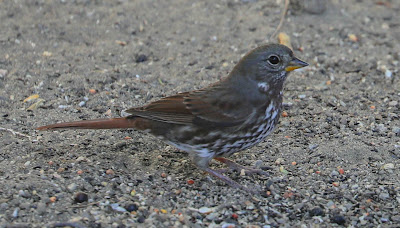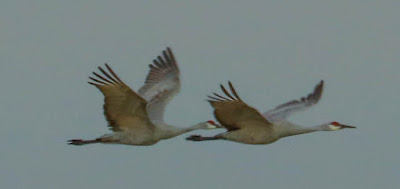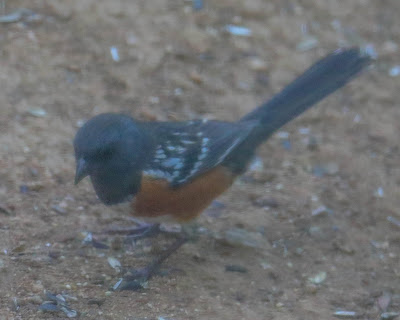I saw a new sparrow on Saturday out at Big Morongo Canyon. It was feeding on seed on the ground near some bird feeders and I was pretty sure it was a bird I'd not seen before, but I had no clue what it was.
This has introduced me into the interesting world of the fox sparrow. Depending on which birding group you look at, there are either four subspecies or four separate species: (1) the red fox sparrow, the brightest colored of the four; (2) the sooty fox sparrow, which is browner and darker than the red; (3) the slate-colored fox sparrow, which has a gray head and mantle, brown wings, brown breast streaks and a russet tail; and (4) the thick-billed fox sparrow, which is similar to the slate-colored, but has a much thicker bill. They vary quite a bit and all of them are beautiful.
I submitted it to iNaturalist as a slate colored. The only responder so far says he would lean toward a red. As I look at the range map, it would appear more likely to be a thick-billed.
 |
| Range map from Wikipedia. |



















































